Imagine the following scenario: you put months of effort into your knowledge base and proudly present it to your peers.
Unfortunately, only a few of them share your enthusiasm, and even fewer use it in their day-to-day work.
What went wrong?
Well, it’s likely you’ve made one of the knowledge sharing mistakes we’re about to describe.
Keeping Outdated or Incorrect Content
Continually providing quality content that is both factual and up to date can be a challenge.
Your knowledge base is something that evolves and develops constantly, and that can’t happen without the participation of the entire team.
Furthermore, your knowledge base shouldn’t be a repository for articles that don’t serve any real purpose.
The shared information should be helpful to employees or your clients, answer their questions, and address the difficulties they encounter in their daily work.
And as we can see from this Deloitte survey, that isn't always the case.
The survey states that every fourth employee believes that the information they’ve received from the knowledge repositories or other colleagues is below average.
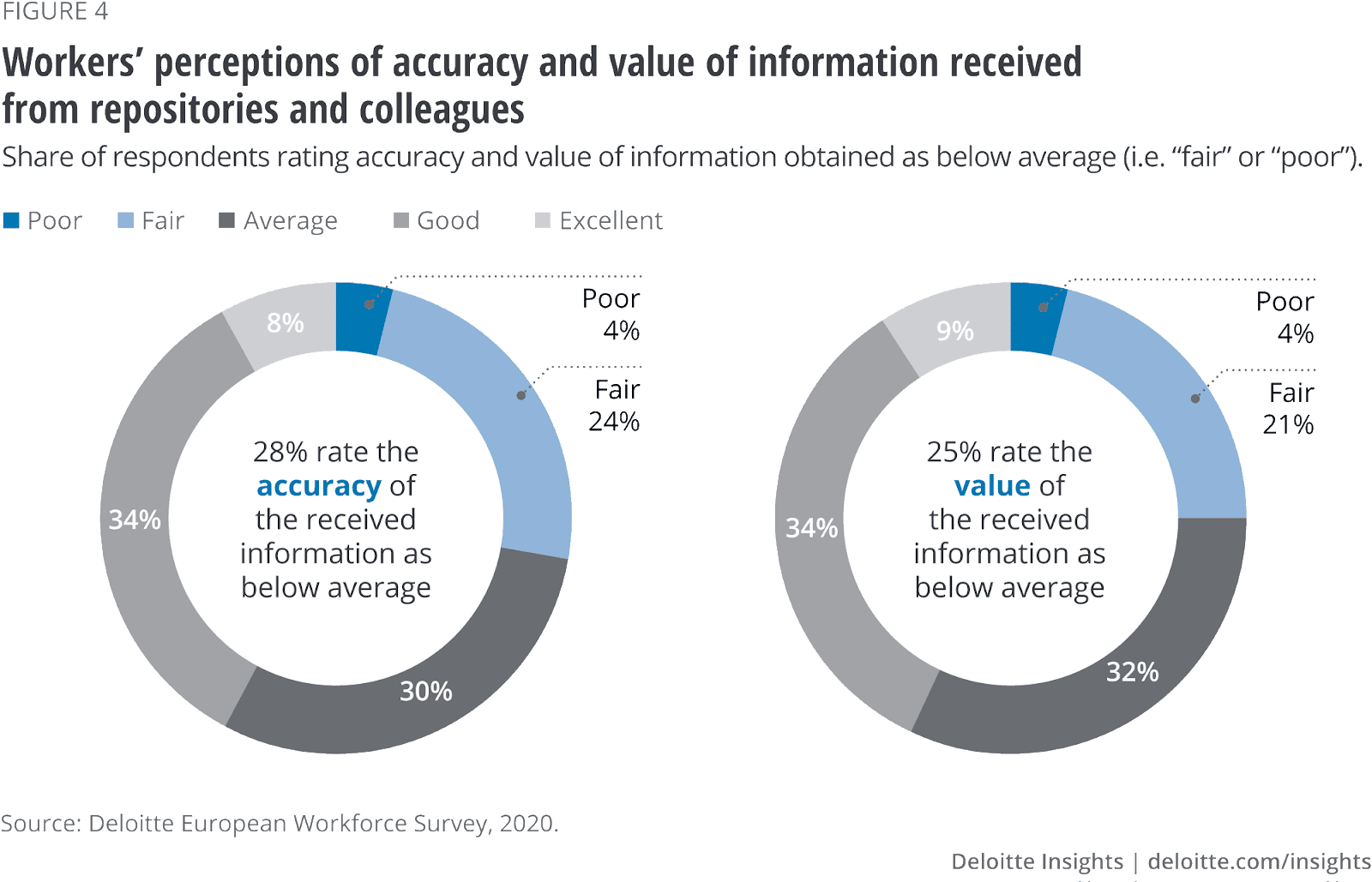
Source: Deloitte
Any content that is outdated, incorrect, or redundant will clutter your knowledge base, and employees will have a hard time finding the information they need to do the job.
And we’re pretty sure they won’t hesitate to rate it as irrelevant, just like they did in the Deloitte survey.
Knowledge management is not a one-time deal but an ongoing process that needs constant revision and change.
Therefore, if you want your employees to think of your knowledge base as a valuable source of information, it would be a good idea to review and update it regularly.
You can assign one or more employees for this task and specify when it’s time to revise content.
But, as always, it's easiest to harness the power of technology and use the specific tools that will let you know automatically when the edits are needed.
Many documentation software solutions already have built-in features that help companies keep their knowledge base up to date.
For example, our own solution, Archbee, has a document verification function for this purpose.
All you have to do is choose a person in your team who is an expert for the subject matter, and select the time frame during which they will receive the notification that it’s time to make revisions.
As you can see from the YouTube video, this can be every week, month, three months, etc.
After that, Archbee will notify them periodically to check the document's content.
As you can see, documentation software like Archbee can be a great help and a time-saver in keeping your knowledge base current and relevant.
Remember, the purpose of the knowledge base is to provide correct, up-to-date content that benefits the end users.
If the content is not in line with their needs, they will lose the motivation to try and rely on it. And once that happens, it will be very difficult to convince them to give it another chance.
Not Incentivizing People to Participate
Without being rewarded for doing so, people will have fewer reasons to share knowledge, so neglecting to provide the proper inducement can be a major mistake.
Employees tend to be more engaged and proactive in sharing their expertise when they believe it’ll be good for their career.
In other words, they are willing to educate others when they know they’ll be rewarded for the work, and that doing so will bring them recognition and respect among their peers.
Unfortunately, statistics show that 51% of companies don’t connect employee participation in knowledge sharing with performance, or incentivize it.
And that means that the employees’ motivation to contribute will be low.
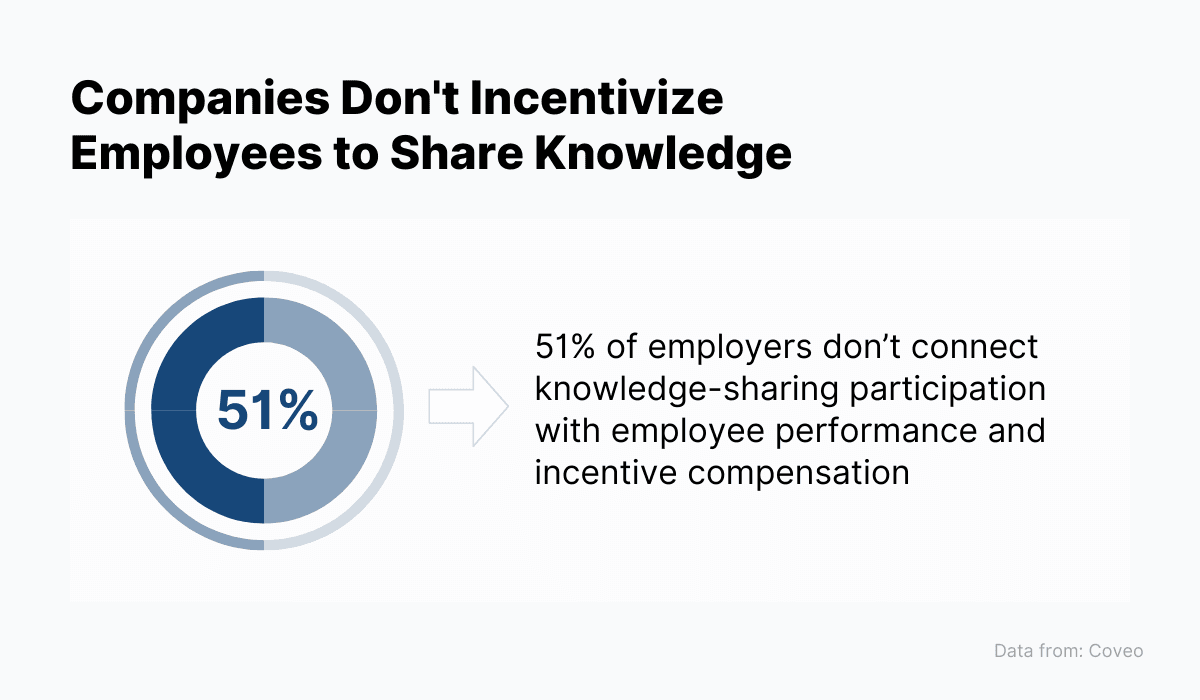
Source: Archbee
That’s why senior stakeholders should emphasize the importance of knowledge sharing and find ways to encourage people to participate.
For instance, it's well-known that a small token of appreciation can go a long way.
And if you do something as simple as acknowledging employees who shared knowledge in team meetings, they’ll feel appreciated and you may even encourage others to follow in their footsteps.
You can also offer tangible rewards, such as a chance for your top knowledge management performers to attend conferences or seminars.
For example, PTTEP, a petroleum exploration and production company, connects knowledge-related activities with career opportunities by offering conference sponsorships to the most active employees.
Other companies, such as Cognizant, opted forgamification in their efforts to incentivize employees to share knowledge.
Gamification is a great feature to implement because there are so many processes that it can benefit, including various forms of knowledge sharing.
Cognizant is a professional services company that offers its clients a wide array of software solutions.
Some enable companies to gamify their business to make it more fun and interactive for their employees and customers.
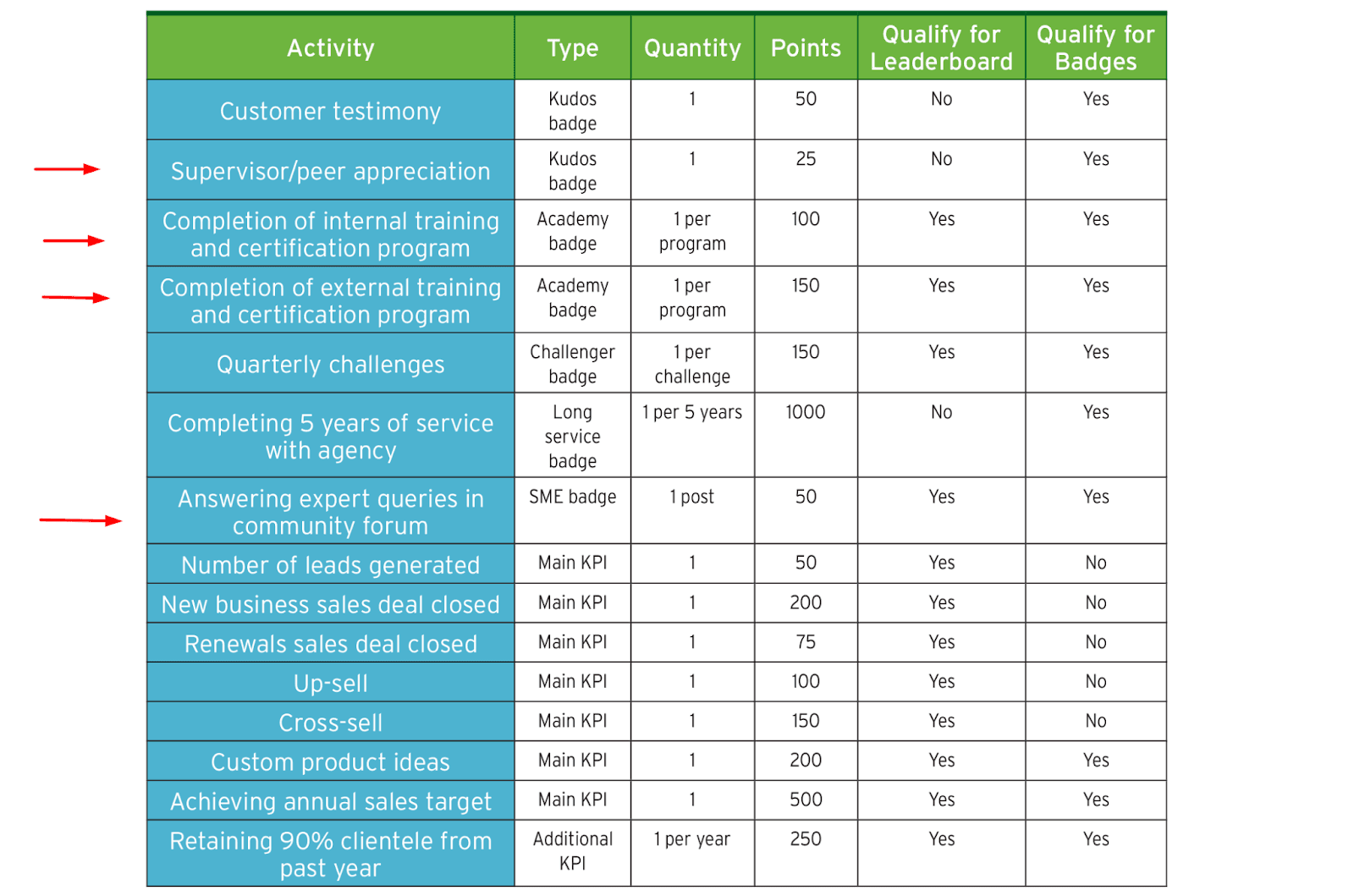
Source: Cognizant
Therefore, it's no wonder that their knowledge management platform is all about fun and games.
Employees earn points for every activity they take on the platform, whether downloading documents, creating content, or commenting on a discussion.
By earning points, they climb on the leaderboards until they reach the samurai, star, legend, or guru level.
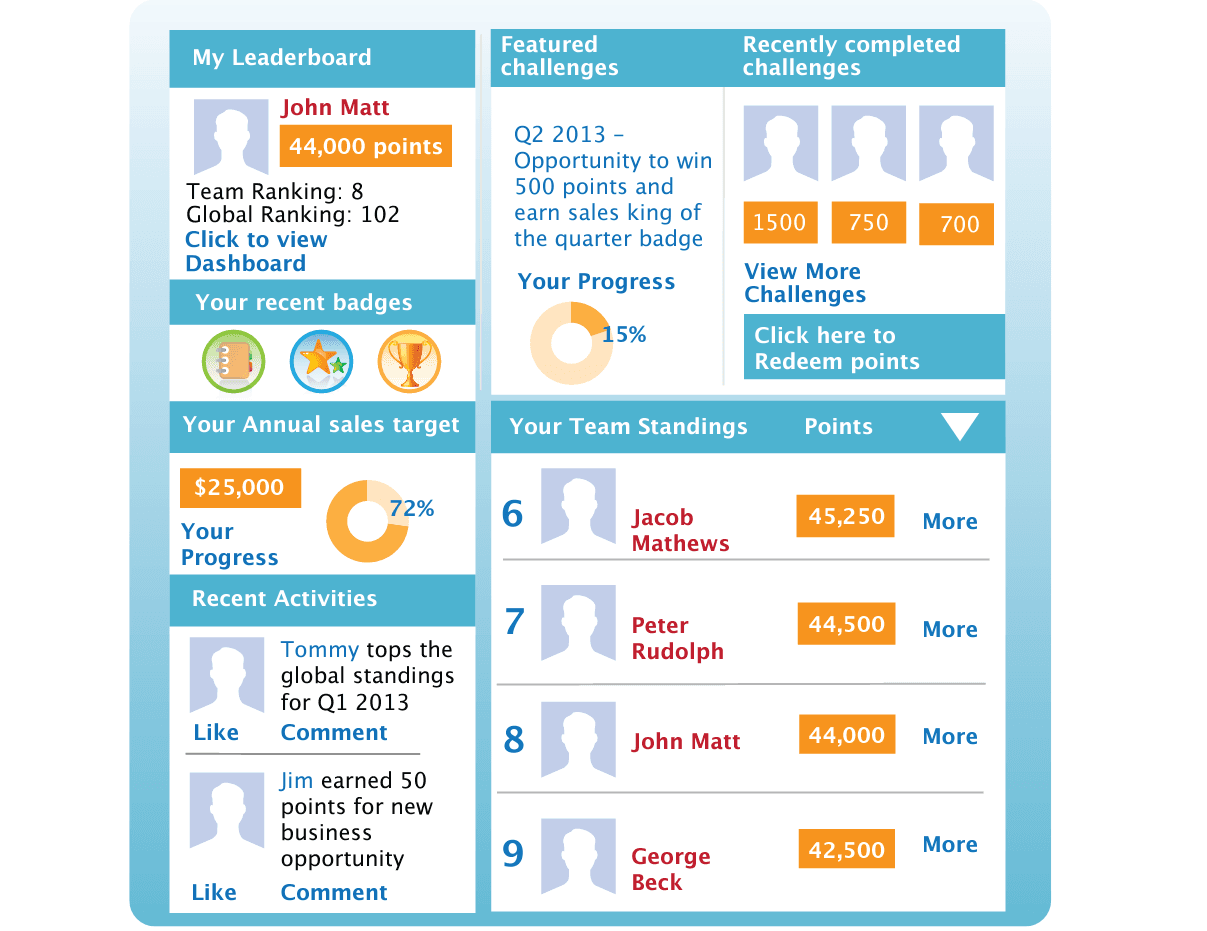
Source: Cognizant
As they can immediately see how they earn points every time they take action, they're motivated to be active on the platform.
These examples show us how creating a rewarding system can be efficient in encouraging knowledge sharing.
So it would be a good idea to motivate employees with recognition, perks, rewards, and games.
They don't cost much and can go a long way in creating a strong and engaging knowledge-sharing culture.
Not Using the Power of Taxonomy
Taxonomy is an essential part of the knowledge base architecture.
If you don't have systematization in place, employees will find it difficult to search through the knowledge base and discover the information they need. And that will eventually lead to their reluctance to use it.
So creating a taxonomy before you even start building your knowledge base is something you should carefully consider.
If you are unsure what taxonomy is and how you can apply it to your knowledge management, try to remember the classifications from your biology class and how they’re all about systematizing species.
As you can see from the taxonomy of dinosaurs below, they’re classified into orders, suborders, infraorders, divisions, subdivisions, etc.
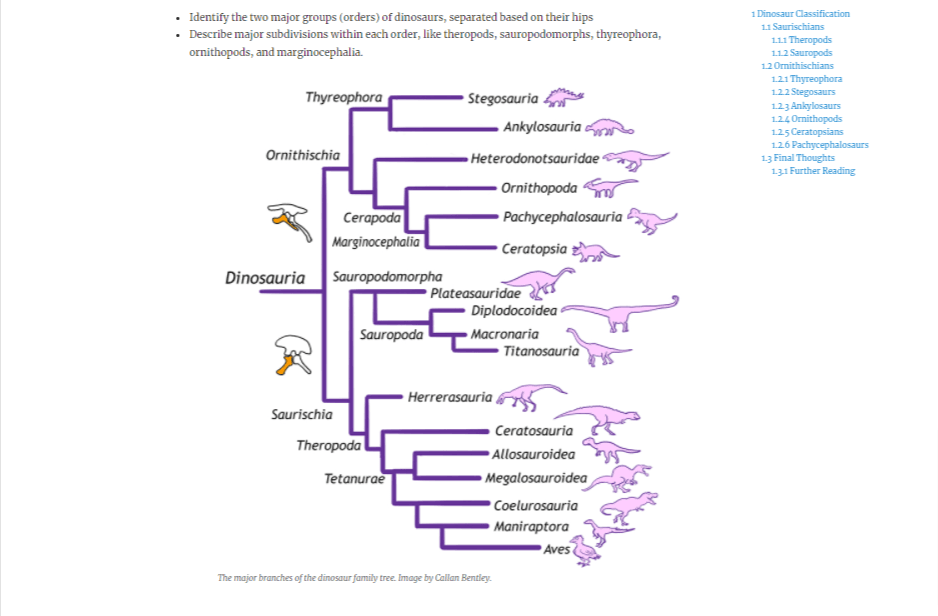
Source: Open Geology
If you apply the same principle to your knowledge base, you will be able to classify your information according to similarities in no time.
For example, from the screenshot from Sweet Process, you can see how easy it is to create a taxonomy for your business, in this case, a music company.

Source: Sweet Process
First, you divide your knowledge base into categories, such as internal links, fundamentals, and technology and research. Then you further classify each category into subcategories, in this case, articles.
Once you plan and create a taxonomy for your content, you'll be able to build a knowledge base that will be well-structured, systemized, and intuitive to use for the end-user.
Suppose you don’t pre-plan your structure.
In this case, your users may not know how to navigate through the knowledge base.
They may have trouble finding the information they need, and finally decide it’s not worth the effort because they can find what they’re looking for faster elsewhere.
The famous saying goes “well planned is half done”.
If you begin your knowledge base well, it'll be much easier to do the rest. And the taxonomy is the way to go.
Placing Knowledge Quantity Over Quality
Not every piece of content, document, or article should find its place in your knowledge base.
Every company should insist on the quality, not the number of articles in the knowledge base.
It’s better to have fewer articles but of great importance than too much content that doesn't bring value to the employees.
For example, Fujitsu strives to make the information in their knowledge base match the real needs of its employees.

Source: Fujitsu
They encourage their employees to share information, ideas, innovations, and tools in their knowledge base platform.
Thanks to the platform’s rating system, other team members can evaluate the articles in the knowledge base by awarding them one to five stars.
This scoring lets employees know which article is high-quality and would be worth consulting and reading.
For example, the article that receives numerous five stars will most likely be the first choice of many employees, while the content with one or two stars will probably be overlooked.
On the other hand, scoring is also helpful to the people in charge of knowledge management.
It informs them of the type of content which is in demand and should be represented more in the knowledge base.
At the same time, it exposes the content that is irrelevant and clutters the knowledge base.
As Fujitsu is a company that operates worldwide, having a quality knowledge base that all their employees can use, from sales and development to managers, is of great importance.
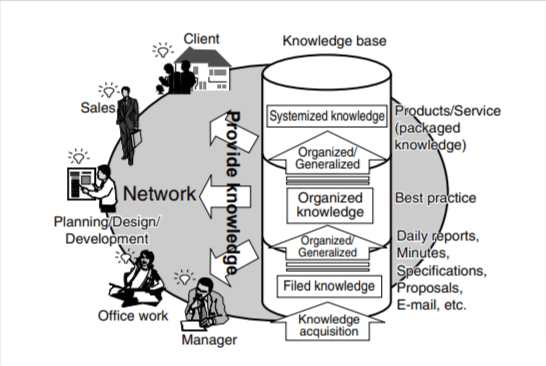
Source: Fujitsu
Setting up a quality control system is essential, since their knowledge base needs to be a valuable source of information for the employees regardless of their location and tenure.
Another great way to ensure you have only the best content in your knowledge base is to use a documentation platform that will enable you to separate the wheat from the chaff automatically.
For instance, Archbee has a special algorithm that notifies admins what the team members are searching for in the knowledge base.
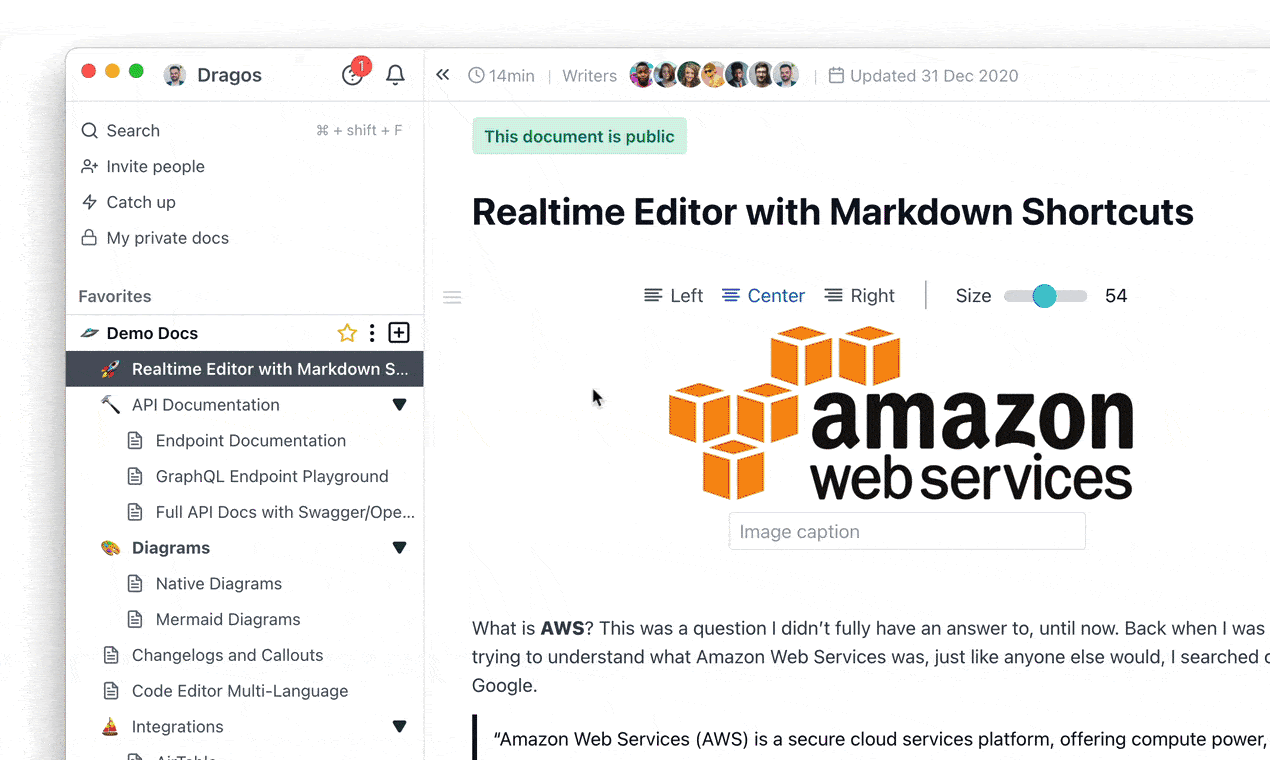
Source: Archbee
That useful feature enables admins to determine what kind of content employees find interesting and helpful and, conversely, which should be classified as ineffective or low-value.
That way, they can see which topics should be represented in future articles, and detect and remove the content that doesn’t meet the desired standards of quality. And that, in turn, will make their job more manageable.
Keep in mind that quality will always be more important than quantity.
So if you want to have engaged and efficient employees, you should strive for excellence when building a knowledge base, too.
Not Utilizing Feedback
When creating a knowledge base, many companies forget that it would be a good idea to ask the employees what they think about it, what kind of content they would like to see, and whether they have suggestions for improvement.
If you want your knowledge base to grow and develop properly, it's essential to gather feedback and learn from your team members about what works and what doesn't.
Surveys and comments can be a great way to identify areas where you need to improve your knowledge base and overcome shortcomings.
You don't have to go into too much detail. A few questions every several months will help you identify the weak spots and discover ways for advancement.
Another great way to capture the feedback from your employees is to use the enterprise social networks.
For example, Faithful+Gould, a project and program management consultancy, uses Yammer as a part of its knowledge filtering approach.

Source: Microsoft
They encourage their employees to post content and ideas in Yammer groups.
By monitoring those groups, they track the topics that are trending. Then the working group creates content and posts it on the knowledge management platform based on these trends.
Yammer then gathers feedback from team members about the new content to determine if it’s quality enough to become a part of a standard knowledge library.
In this case, the feedback and review of the employees is the deciding factor in the quality of the article and ensures that the knowledge base contains only the content necessary for the team members.
Often knowledge base platforms have a commenting feature that enables employees to discuss the topic directly on the platform.
Our documentation software Archbee lets your entire team collaborate on creating the content.
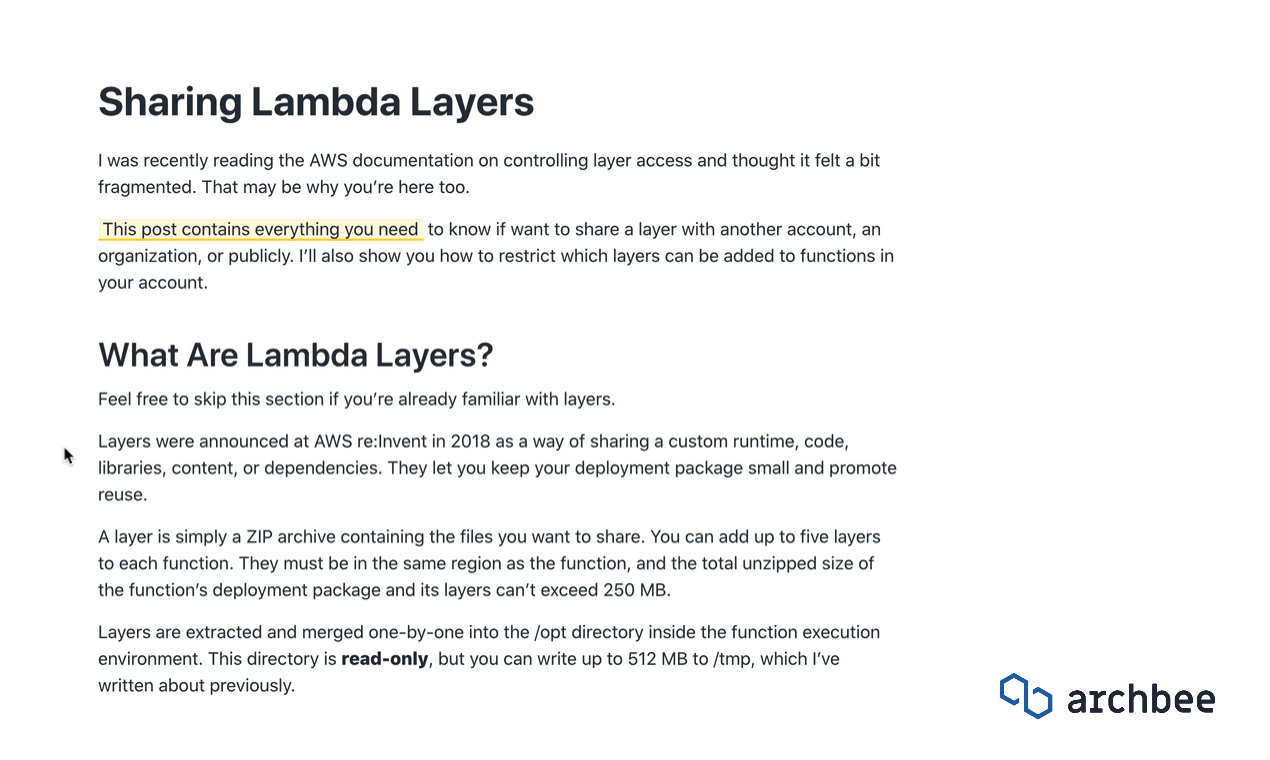
Source: Archbee
When team members select a piece of content, a pop-up window opens that enables them to comment directly, ask questions and give feedback.
These are great ways to gather employee feedback, and you need to take it from as many sources as you can to get a broader picture of the content that is valuable to the team members.
By considering employee feedback, you’ll be able to build a powerful knowledge repository that will be a central source of knowledge and wisdom for everyone in the company.
Using the Wrong Technology to Capture and Manage Knowledge
Choosing the right technology that you'll use for your knowledge-sharing process can be challenging, especially if you don't have any previous experience in this field.
Although most documentation software has free trials, many companies still can't predict which features they'll need in the long run and which shortcomings of the software will prevent them from building the knowledge base they want.
That's why it's easy to make a mistake and choose the documentation platform that won't be able to fulfill the unique needs of the company.
To avoid such mistakes, companies should first and foremost go for user-friendly software that provides an excellent user experience.
For example, our own documentation software, Archbee, has an intuitive interface.
Employees can quickly grasp how to share information and ideas, and participate in discussions.

Source: Archbee
Also, with Archbee, creating documents, writing and editing text, adding images, and embedding videos will be a breeze thanks to the numerous markdown shortcuts.
Knowledge management may seem complicated, but the truth is that it doesn't have to be.
With the proper tool, you can visually present your knowledge base's structure to your employees.
For example, Archbee enables you to create knowledge graphs that allow you to link the content and display it visually.
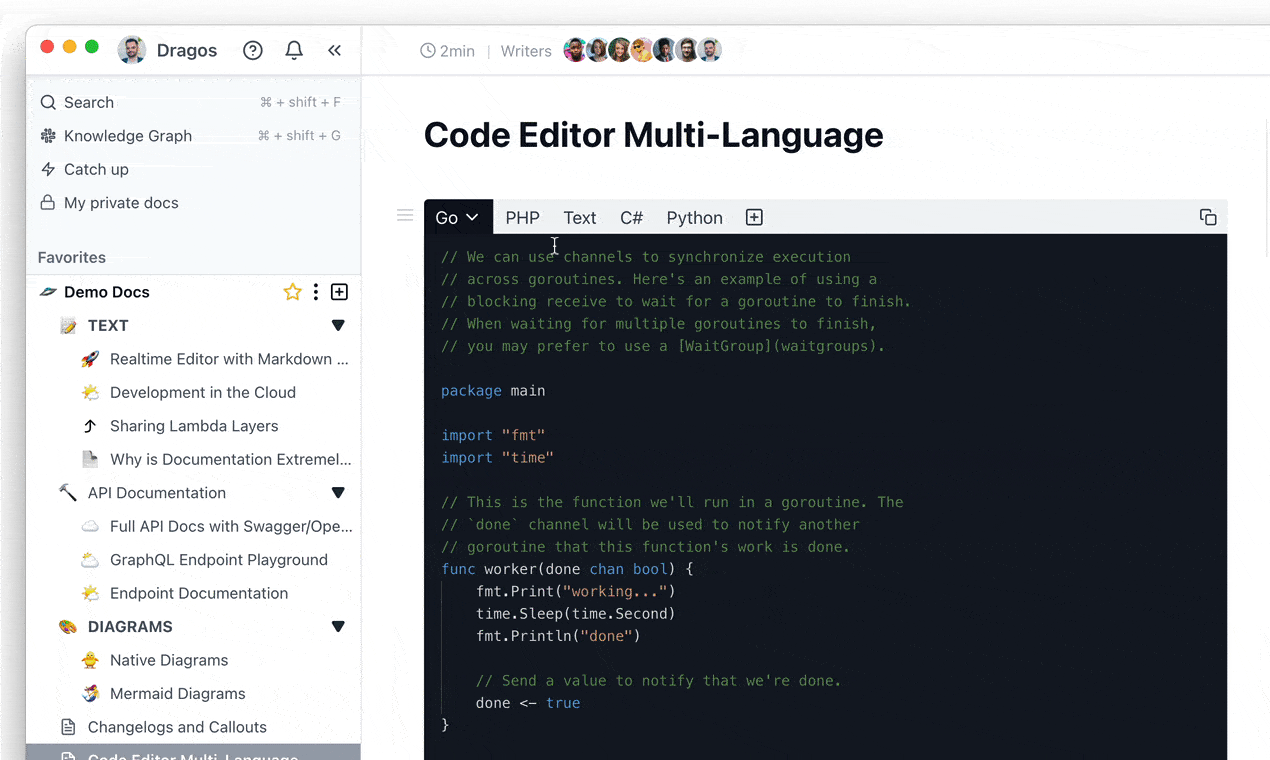
Source: Archbee
This way, employees can easily see the knowledge base structure, click on the content they’re interested in, and read more about it.
This feature is excellent for onboarding and building a great team as all articles are quickly and easily accessible to all employees.
Lastly, be sure to pay attention to security.
Your knowledge base will contain documents crucial for your business, and you will probably want them to be protected at all times.
For example, Archbee has a daily backup and can restore lost data within an hour.
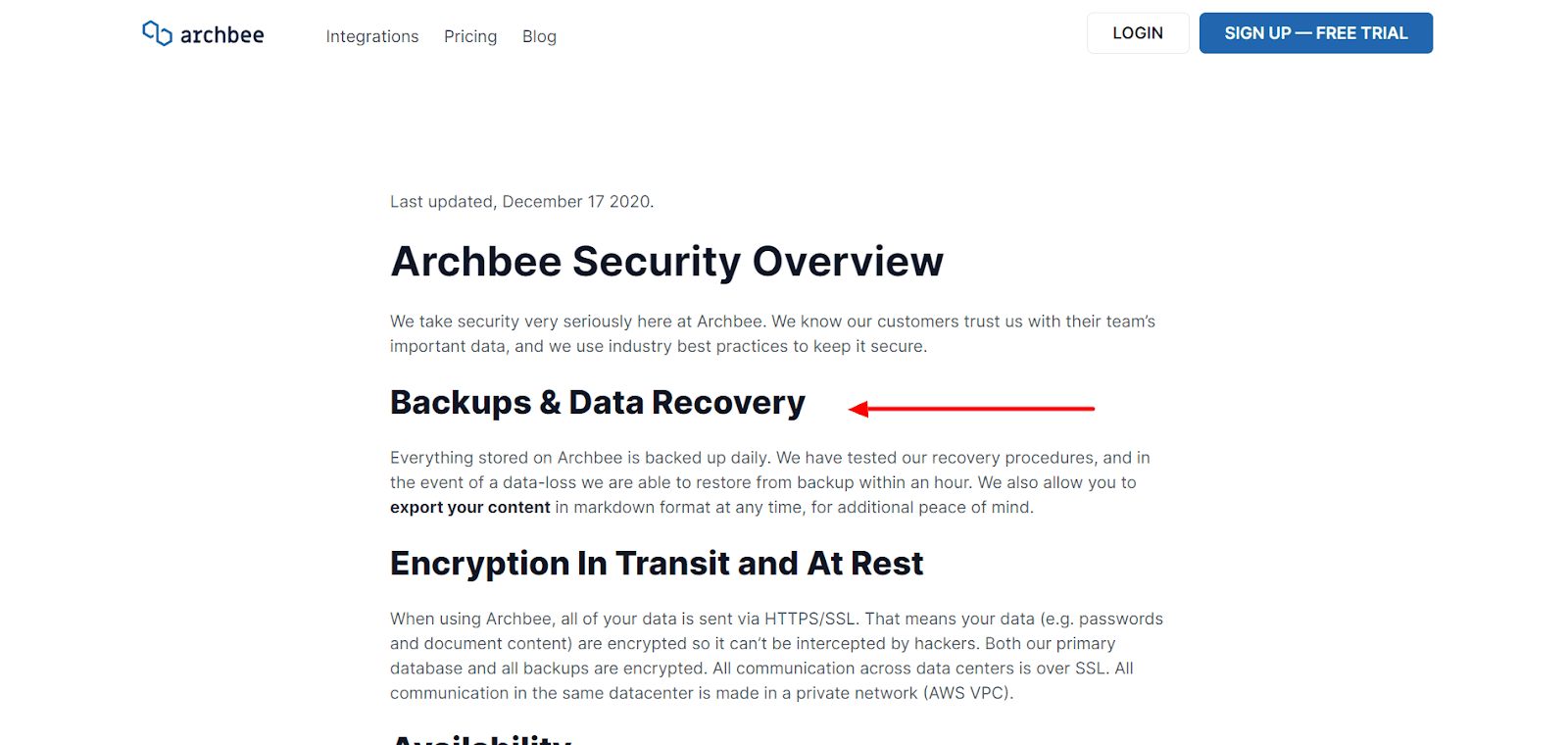
Source: Archbee
If the documentation software doesn't have an advanced backup system in place, you risk losing data that can harm your business. Investing in software with a great backup should be your priority.
It's easy to make a mistake when choosing the documentation software for your knowledge base.
But suppose it allows you an excellent user experience, the possibility of visual presentation of the content, and exceptional security. In that case, the chances are that you're making a good choice.
Conclusion
In this article, our goal was to outline the mistakes that continually occur in knowledge management and describe how you can prevent them by using the examples of actual companies.
Whether it's about not reviewing your knowledge base regularly, not getting rid of unnecessary content, failing to reward the employees who are active in knowledge-sharing or providing feedback, these mistakes repeatedly happen without companies even being aware of them.
We hope this article has inspired and encouraged you to take care of your company's knowledge resources appropriately so that they can benefit you and your employees in the long run.
Frequently Asked Questions
The usual suspects:
- Outdated or inaccurate content: People stop trusting the knowledge base when answers are wrong or stale.
- No incentives to contribute: Without recognition or career impact, sharing becomes “nice to have,” not a habit.
- Weak or missing taxonomy: Poor structure makes content hard to find and keep tidy.
- Quantity over quality: A pile of low-value articles buries the few great ones.
- Ignoring feedback and usage signals: You miss gaps, confusion points, and high-demand topics.
- The wrong tools: Clunky UX, weak search, or poor security kills adoption and confidence.
How to avoid them:
- Assign owners to key areas and set review cadences (e.g., 30/90/180 days).
- Recognize and reward contributors (public shout-outs, career credit, learning budgets).
- Design a clear taxonomy before publishing; document naming and tagging rules.
- Prioritize high-impact topics and prune redundant or low-value content.
- Build feedback loops (ratings, comments, quick surveys) and track analytics (failed searches, popular pages).
- Choose user-friendly, searchable, secure software with reminders and versioning.
